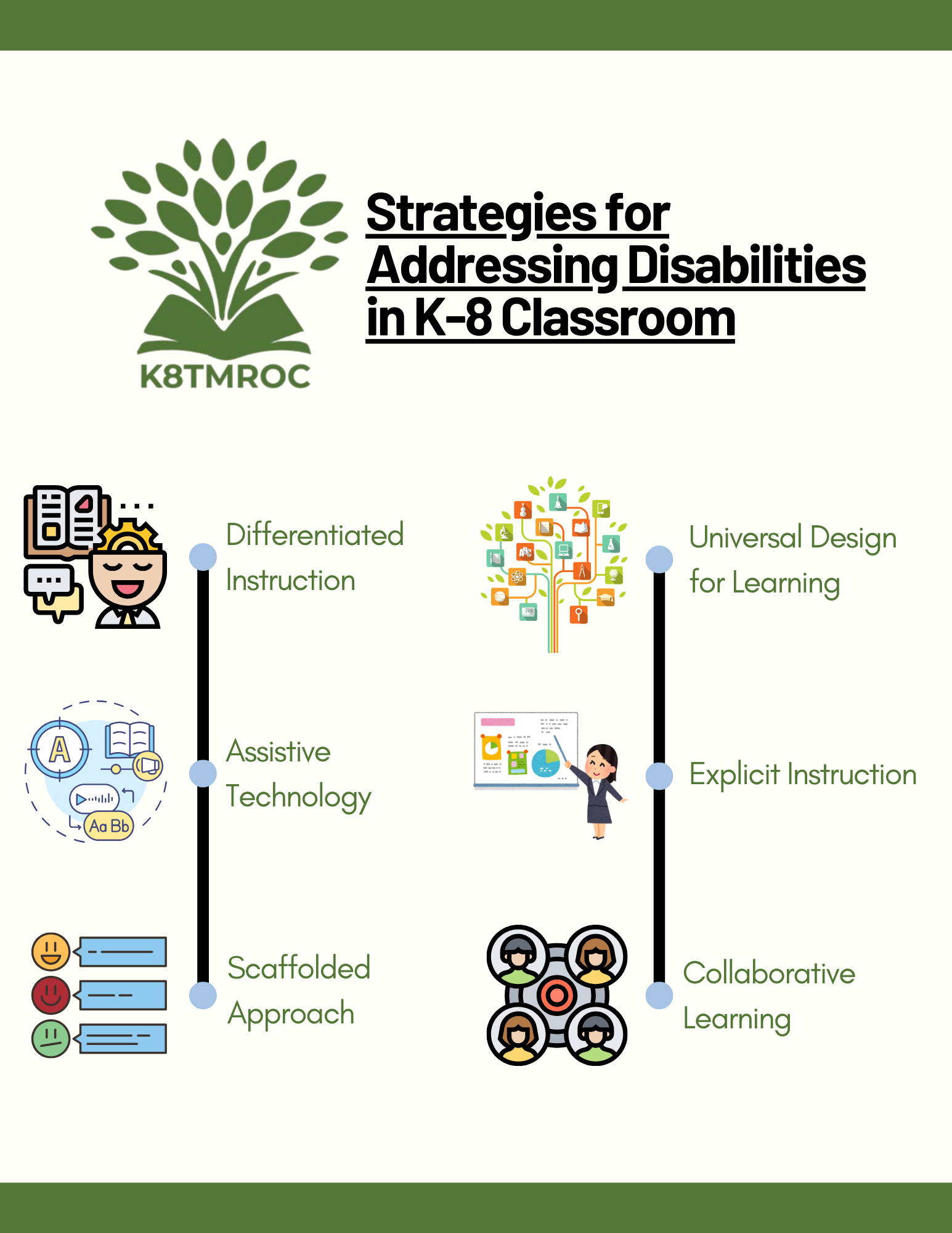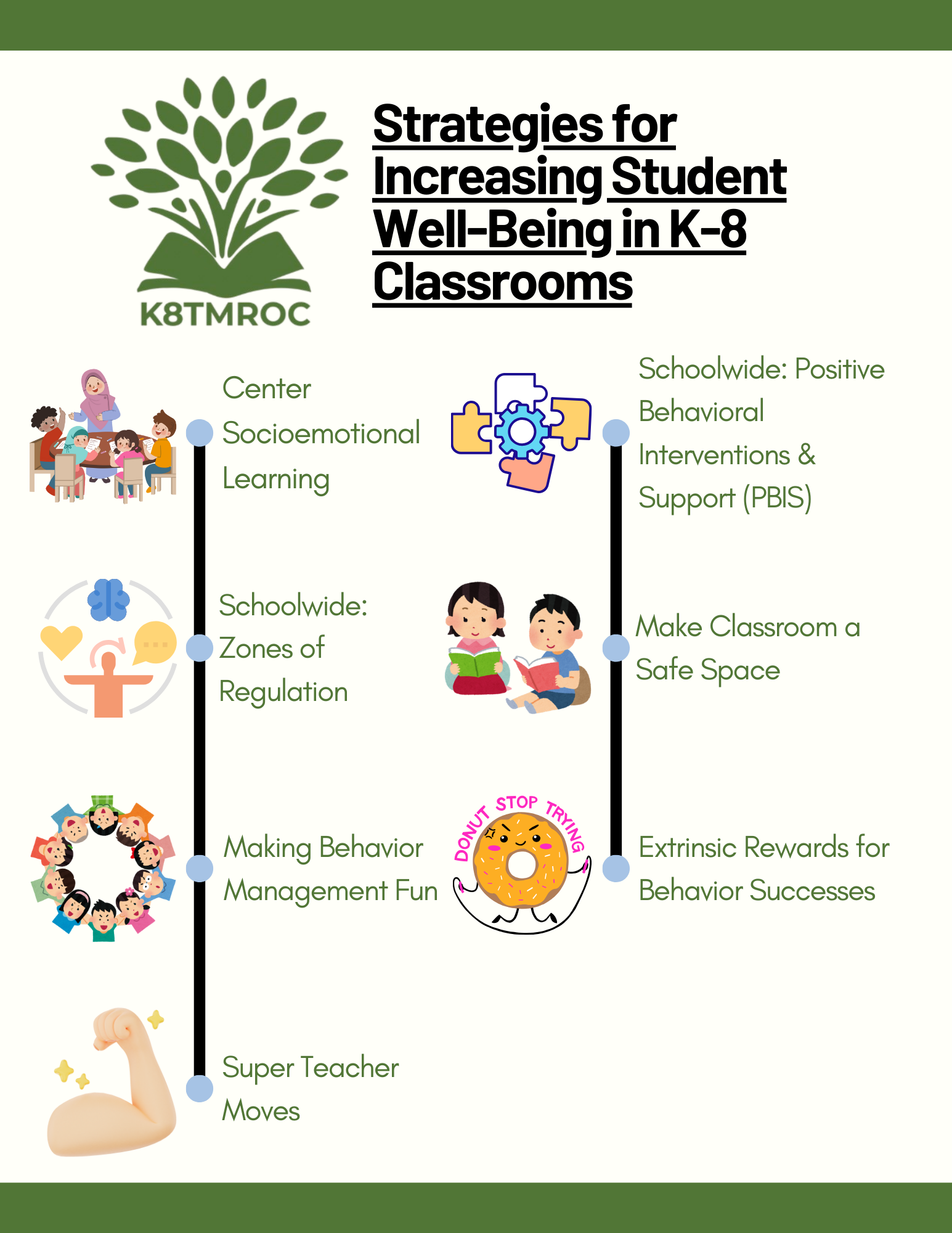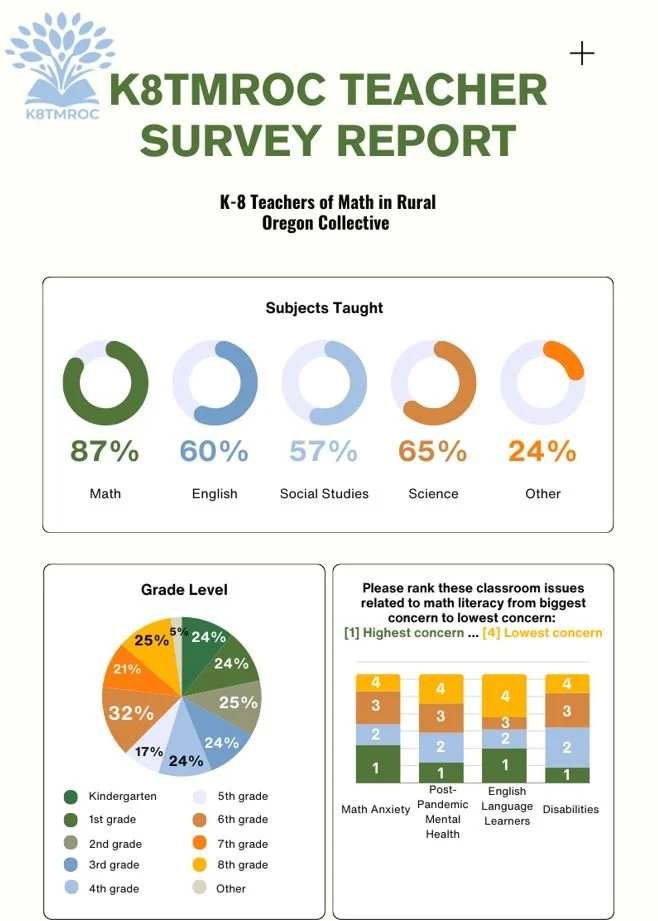Teacher Expertise and Strategies for the Rural K-8 Classroom
-
Cultural failure to recognize that math skills depend on effort rather than natural ability
Cultural failure to recognize that math skills are central for work and daily life
Cultural failure to recognize that math ability does not depend on having certain biological traits (e.g., white skin, a penis)
Students are negatively impacted by negative stereotypes related to math and learning more broadly (e.g., ‘nerd,’ ‘school boy’)
Children don't realize that others’ perceptions of their math potential are shaped by cultural, family, and personal biases
Children do not see others who look like them in math/science positions
Technology does note negate the need to learn math
We need more open discussion of these issues
-
Parents’ own math anxiety shapes their explicit or implicit communication about math with their children
Parents lack the time or educational resources to assist their children with math homework
Shifts over time in how math is taught contributes to parents not being able to help their children with math homework
Parents’ expectations for their children’s math performance either persuade children math is unimportant (low expectations) or that it’s a stressful subject (high expectations)
Parents implicitly or explicitly reproduce negative cultural perceptions of math in their interactions with their children
Children’s math anxiety is heightened by within-family dynamics (e.g., being compared to a sibling)
Family dread of too much math homework
Parents communicate their dislike for teachers or school
-
Teachers are pressured/required to cover a certain breadth of math topics rather than having time to ensure mastery for all students
There is peer pressure / bullying to not be high achieving, not be a ‘nerd’
Our school structure sends a message to some students that they lack math potential (e.g., tracking, grades, test scores)
Students have low math confidence because they internalize cultural messages surrounding math and believe that they are unique in their math struggles
Some students feel they are perceived by their peers and/or teachers as lacking math potential
Classroom climates that don’t allow for multiple ways to demonstrate knowledge or that don’t normalize making mistakes
Teachers’ own math anxiety or pedagogical struggles (e.g., classroom management, instructing students with different learning styles)
School processes that reproduce cultural notions that math skills are based in neurological exceptionality rather than opportunities to learn and hard work (e.g., disability labels, gifted labels)
Classroom climates that don’t allow for multiple ways to demonstrate knowledge or that don’t normalize making mistakes
Over-emphasis on testing students, especially timed tests
Pedagogical approaches that don’t demonstrate the value and real-life relevance of math
Students who struggle with reading will also struggle in math (e.g., word problems are common, English Learners, dyslexia impacts number processing as well as letter processing)
-
Demonstrate the value and relevance of math for the lives of your students
Teach math with excitement, through fun and play
Normalize and model mistakes as central for progress and growth
Talk with students about how countries that outperform the US perceive math as something that is accessible to all through learning and effort, whereas the US perceives math as something requiring rare natural ability
Prepare teachers to recognize their own math anxiety and to avoid pedagogical approaches that imply negative math attitudes to students
Demonstrate the value and relevance of math for the lives of your students
Slow down, prioritizing learning and mastery over covering everything
Use multiple modes of instruction, engagement, and assessment
Educate parents on words and actions that perpetuate the US’s negative cultural orientation toward math and math anxiety
Create an inclusive classroom climate in which every student feels valued for their unique strengths
Engage with students with empathy, mindfulness, and love
Avoid high stakes activities (e.g., timed activities, calling on students, not providing adequate think time)
Provide opportunities for collaboration and peer instruction
Provide students with agency and accountability over their own learning
-
Multigenerational experience with and closer connections to students’ families facilitates deeper knowledge and better communication
Teachers have more autonomy and flexibility, as well as the ability to tailor instruction to the context and individual students
Schools and classroom sizes are often smaller, with the latter being one of the few consistent aspects of the school environment linked to higher achievement levels
In rural communities, schools can be the center of the community, processes are more transparent, and teachers often wear multiple hats, such that teachers have a better sense of the big picture and their voices are more often heard
The heightened sense of community and care in rural communities can translate to heightened collegiality amongst teachers, lower rates of teacher turnover, and better treatment of people in teacher assistant positions
Students in some rural schools exhibit fewer externalizing behaviors
-
Rural schools can be understaffed in terms of administrators, teachers, and assistants (e.g., smaller local pool of applicants, lower pay/benefits)
Less positive attitudes toward education in community because rural jobs legitimately require less education and lower levels of educational attainment in community
Fewer educational resources in community and fewer intramurals (e.g., clubs, drama, music)
Fewer resources for specialty populations of students (e.g., IB courses, IEPs, 504)
Can be more emphasis on parental control over classroom curriculum and processes
Some rural communities have heightened levels of poverty and/or income inequalities, which relates to externalizing behaviors and lower achievement
Less access to local professional development and teacher mentors
School boards can be more politicized and more involved in teacher retention decisions
Smaller rural schools at risk of losing students seeking academic, athletic, extracurricular opportunities
The classrooms of some rural teachers serve students in multiple grade levels
Small communities can be toxic for students with negative reputations
Rural communities can be more resistant to educational change and innovation
Rural communities may serve more transient students (e.g., migrant families), making it difficult to build relationships and maintain continuity of service
Students and teachers in rural communities sometimes face long commutes to school
-
Involve parents so classroom processes are transparent and they feel more control over their children's school lives
Culturally responsive math material should reflect local job opportunities and hobbies (e.g., farming)
Ensure access for all students to STE(A)M enrichment (with 'A' for agriculture & arts in rural areas)
Be sensitive to and try to understand the roots of different political views than your own
-
Provide extra support with math vocabulary (e.g., Google translate, read-write tools, visual, labeling items in classroom)
Discuss the history of math vocabulary
Use manipulatives in addition to verbal instruction
Communicate to students that being bilingual is an asset, improving concentration, problem solving, memory, and creativity
For increased cultural relevance, survey students at beginning of year (e.g., language spoken at home, religion/holidays) and have students help you include these cultural features in the curriculum
Use Guided Language Acquisition Design
Use google translate or AI to provide handouts in multiple languages
Be aware that conversational fluency is not equivalent to academic fluency
Take care to not conflate English proficiency with academic potential
-
Because socioemotional learning is as central as math and reading, integrate it throughout the day & ideally take a schoolwide approach
Positive Behavioral Interventions and Supports improves well-being for students, teachers, and the entire school: Continuum of evidence-based practices, Involve parents & community, Check effectiveness, Rely on teams, Use data & universal screening, On-going professional development
Zones of Regulation is another efficacious schoolwide intervention
Make your classroom a safe space through authentic conversations with students about emotions, providing a corner for mental breaks, and incorporating low-stakes activities
Make behavior management fun through timing transitions, playing games to learn Zones of Regulation, and centering students in making plans
Provide extrinsic rewards for behavior successes (e.g., drawing times, stickers, prize box, teacher vs. students games, free seating choice day)
Be proactive by cultivating positive relationships with students that invite confidences, approaching an 'off' student to de-escalate before behaviors emerge, and by being sensitive to students' identities (e.g., a 504 plan) and age
-
Employ differentiated instruction including materials tailored to different learning styles and flexible grouping
Universal Design for Learning: multiple means of representation, action and expression, and engagement
Some students with disabilities will benefit from assistive technology (e.g., digital tools, calculators, adaptive devices)
Provide explicit instruction including explicit, systematic instruction and visual supports
Take a scaffolded approach, providing structured practice with immediate feedback but then gradually releasing more of the responsibility for learning to the students
Rely on collaborative learning (e.g., peer learning/tutors, collaborative learning)








